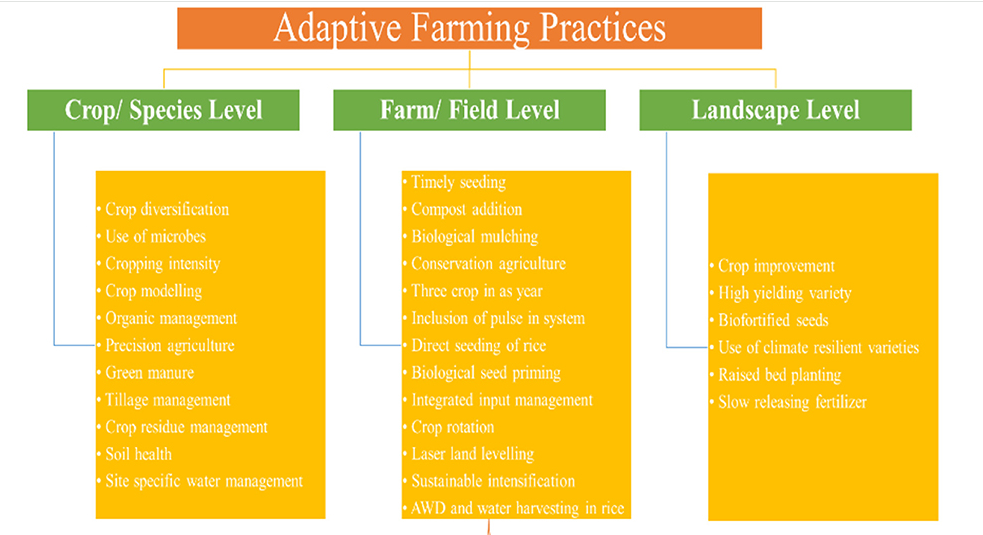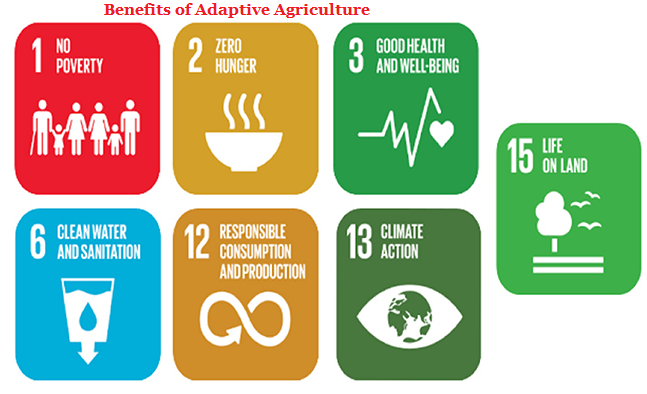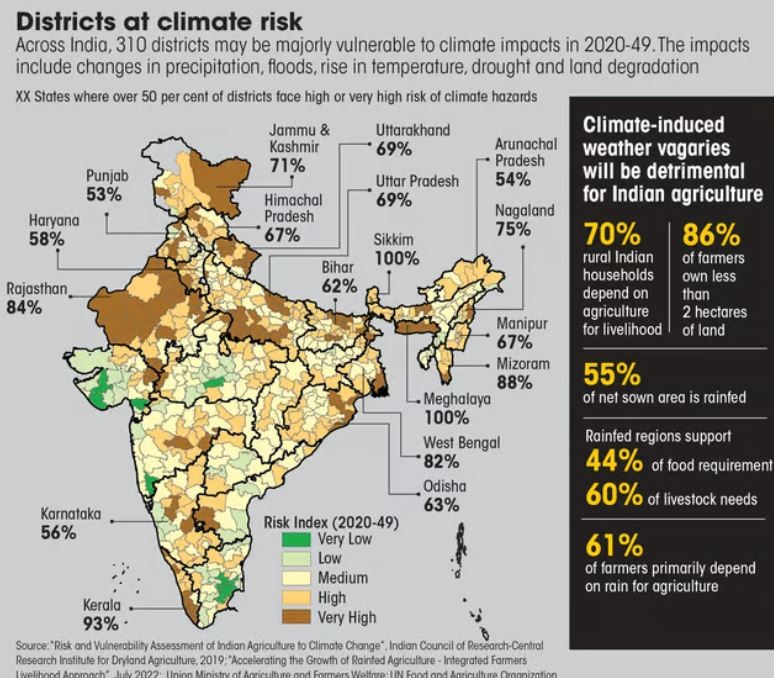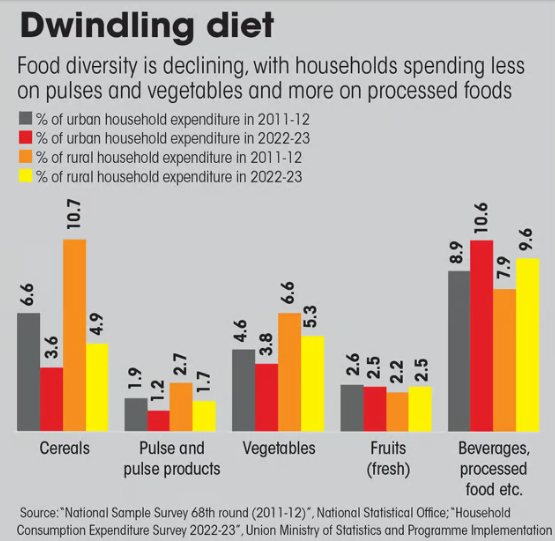7667766266
enquiry@shankarias.in
The recent report of Centre for Science and Environment highlights that organic and natural farming offer several advantages over chemical-dependent inorganic methods.

|
Examples of Adaptive Agriculture |
|
To know more about Climate Smart Agriculture, click here




National Initiative on Climate Resilient Agriculture India’s first programme to enhance climate resilience of agriculture.
States like Karnataka, Odisha and Uttarakhand already procure organic produce and link it with the public distribution system and the Integrated Child Development Scheme.
|
State government Initiatives |
|
|
Andhra |
|
|
Haryana |
|
|
Odisha |
|
|
Karnataka |
|
|
Maharashtra |
|